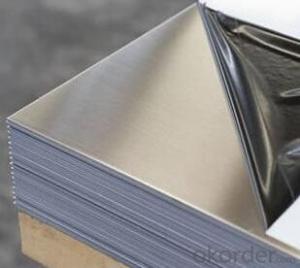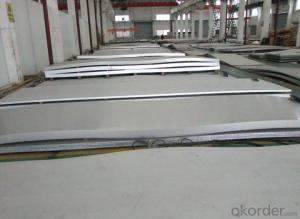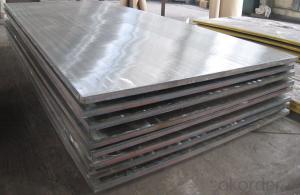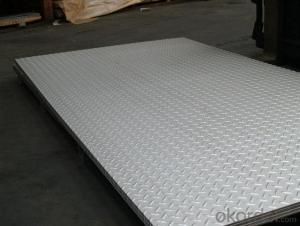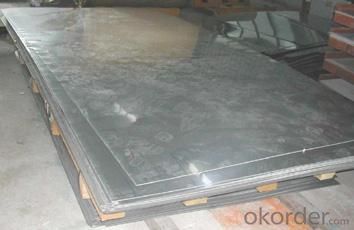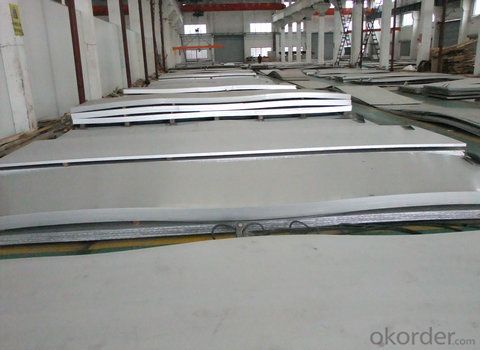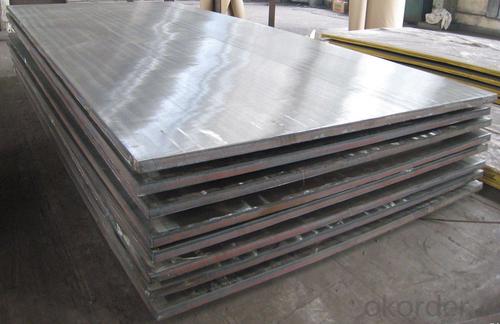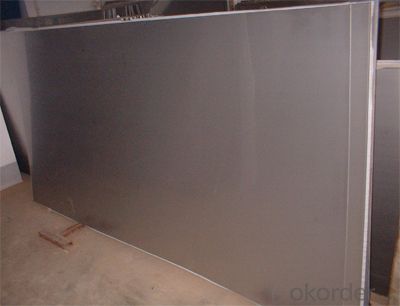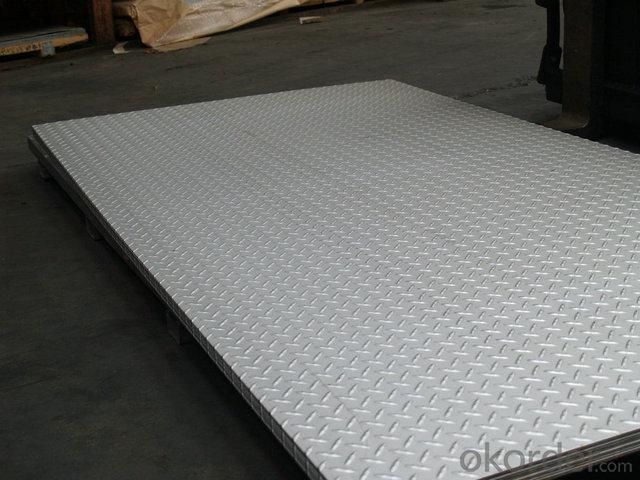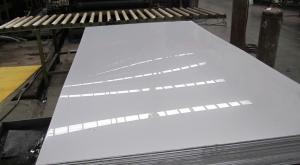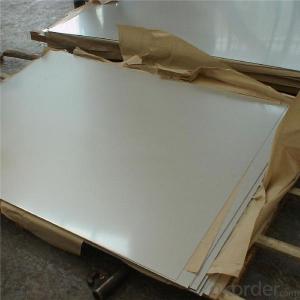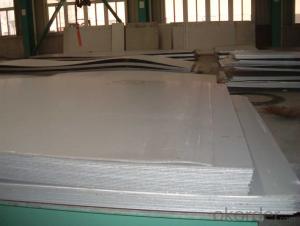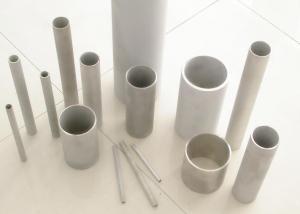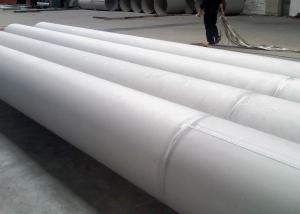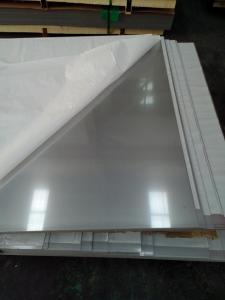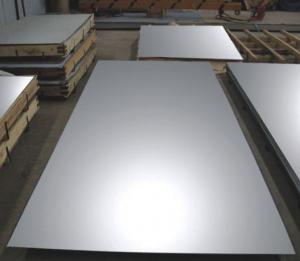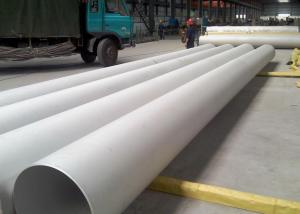Stainless Steel plate and sheet 321 with plenty stock
- Loading Port:
- Shanghai
- Payment Terms:
- TT OR LC
- Min Order Qty:
- 500 m.t.
- Supply Capability:
- 5000000 m.t./month
OKorder Service Pledge
OKorder Financial Service
You Might Also Like
Hot sale stainless steel sheet 201/202/304/304l/316/316l/430
Description of Stainless Steel Sheet:
Description | steel sheet,hot rolled steel sheet,cold rolled steel sheet, steel sheet,sheet,steel plate |
Standard | ASME, ASTM, EN ,BS,GB,DIN, JIS etc |
Application | Steel sheet applies to construction field, ships building industry, petroleum & chemical industries, war and electricity industries, food processing and medical industry, boiler heat exchanger, machinery and hardware fields. |
Packaging | Standard export sea-worthy packing |
Delivery time | 10-30 days |
Quality | No.1 |
Productivity | 500 tons/Day |
Note | Our company has cooperative relation between the domestic agents. Stainless steel sheet can be made accordingto the customers requirements. Fasten delivery. Quality assured. |
Contacts | If you have any question,please feel free contact me. |
Stainless steel sheet surface finish characteristics
Surface finish | Characteristics and application |
2B | The surface brightness and flatness of no2B is better than no2D. then through a special surface treatment to improve its mechanical properties,No2B could nearly satisfy comprehensive uses. |
No.1 | Polished with abrasive belt of grit#100-#200, have better brightness with discontinuous coarse stria, used as inner and external ornaments for building, electrical appliances and kitchen utensils etc. |
No.4 | Polished with abrasive belt of grit #150-#180,have better brightness with discontinuous coarse stria, but thinner than No3, are used as bathtub buildings inner and external ornaments electrical appliances kitchen utensils and food processing equipment etc. |
HL | Polished with abrasive belt of grit #150-#320 on the NO.4 finish and has continuous streaks, mainly used as buildings ornaments elevators, door of building, frontal plate etc. |
BA | Cold rolled, bright annealed and skin-passed, the product have excellent brightness and good reflexivity like mirror, kitchen apparatus, ornament etc. |
8K | The product have excellent brightness and prefer reflexivity can to be the mirror. |
Main Features of stainless steel sheet :
•Escalator, Elevator, Doors
•Furniture
•Production tools, Kitchen appliances, freezers, cold rooms
•Auto Parts
•Machinery and Packaging
•Equipment and Medical devices
•Transport system
Product Details:
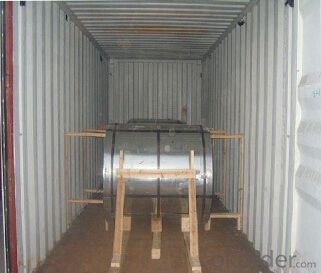
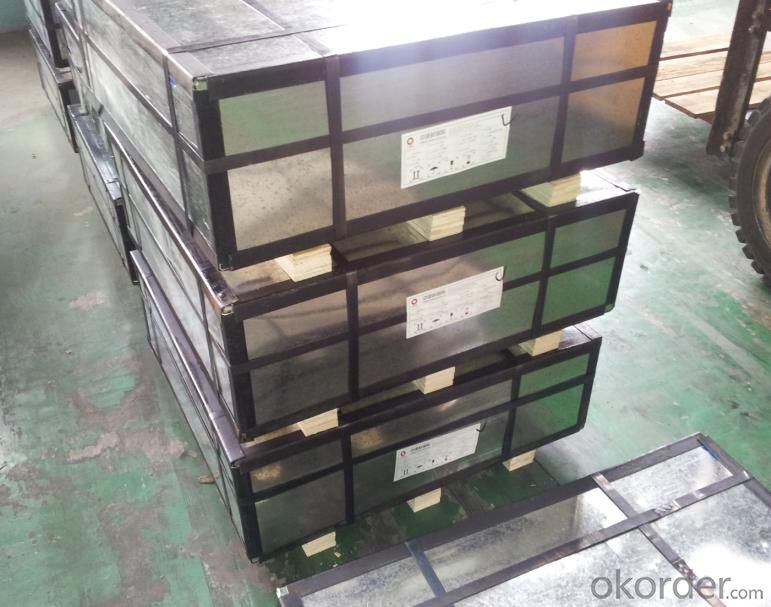
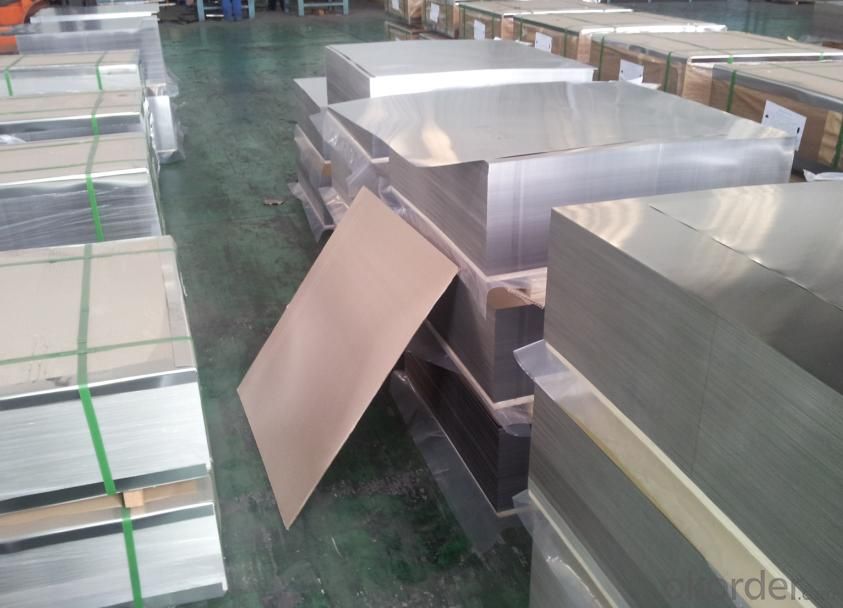
Sandard Seaworth Packing(wooden packing with water proof paper)
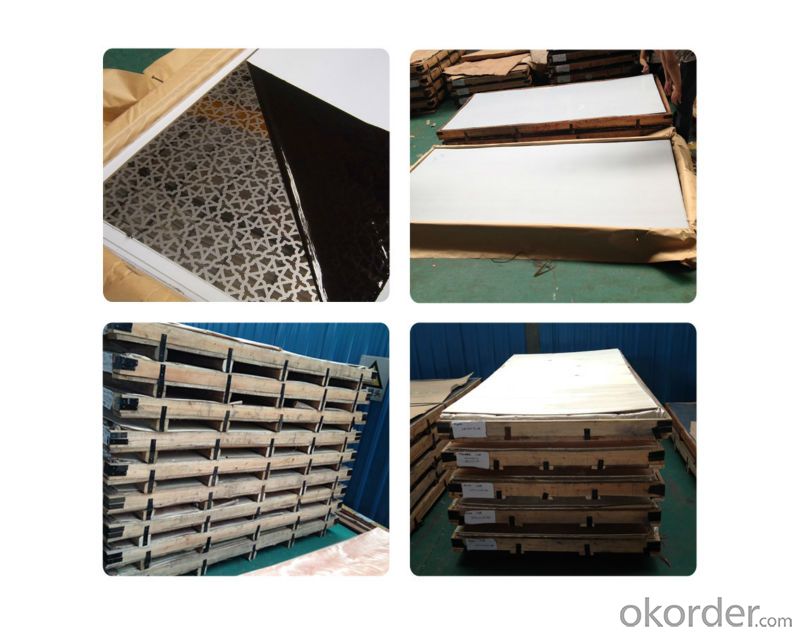
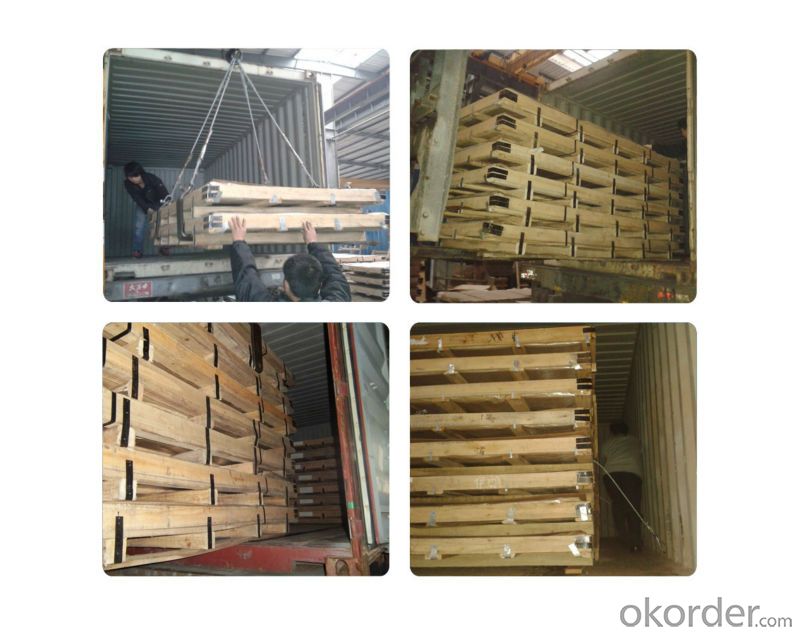
FAQ:
1. What's the quality?
very fine
2. How long get reply?
within 24 hours
If you have any question about stainless steel sheets,donot forget to sending the email to Us! You will get the competitive Price and have a very good experience about the Buying Process! CNBM International Corporation is always your trustful friend!
- Q: Are stainless steel sheets suitable for chemical processing equipment?
- Yes, stainless steel sheets are highly suitable for chemical processing equipment. Stainless steel is known for its exceptional corrosion resistance, making it resistant to chemical substances and environments. It is also durable, strong, and easy to clean, making it a preferred material for chemical processing equipment that requires regular exposure to various chemicals and rigorous cleaning procedures. Additionally, stainless steel has a high melting point, making it suitable for handling high temperatures often involved in chemical processes. Overall, stainless steel sheets are an excellent choice for chemical processing equipment due to their corrosion resistance, durability, strength, and ease of maintenance.
- Q: Can stainless steel sheets be used for decorative backsplashes?
- Yes, stainless steel sheets can be used for decorative backsplashes. Their sleek and modern appearance, durability, and resistance to stains and corrosion make them a popular choice for adding a stylish and functional element to kitchens or other spaces.
- Q: How do you attach stainless steel sheets to a wall?
- To attach stainless steel sheets to a wall, there are a few common methods you can consider: 1. Adhesive: Using a high-strength construction adhesive specifically designed for metal bonding, apply it to the backside of the stainless steel sheet. Press the sheet firmly against the wall and hold it in place until the adhesive cures. This method is suitable for smaller, lightweight stainless steel sheets. 2. Screw fasteners: Drill holes through the stainless steel sheet and into the wall at regular intervals. Use stainless steel screws that are appropriate for the thickness of the sheet and the wall material. Insert the screws into the holes and tighten them until the sheet is securely attached to the wall. This method works well for larger and heavier stainless steel sheets. 3. Magnetic mounting: If the stainless steel sheet is magnetizable, you can use magnets to attach it to a metal wall. Place strong magnets on the backside of the sheet, aligning them with the corresponding magnets on the wall. The magnets will hold the sheet in place, allowing for easy installation and removal. 4. Panel mounting systems: Some manufacturers offer panel mounting systems specifically designed for stainless steel sheets. These systems typically consist of brackets or clips that attach to the backside of the sheet and then hook onto a track or rail system mounted on the wall. This method provides a secure and visually appealing attachment solution. When attaching stainless steel sheets to a wall, it's important to ensure that the wall surface is clean, dry, and properly prepared. This will help optimize the adhesion and prevent any potential issues. Additionally, always follow the manufacturer's instructions and guidelines for the specific method or product you are using.
- Q: Can stainless steel sheets be used in the construction industry?
- Yes, the construction industry can utilize stainless steel sheets. Stainless steel is a versatile material that offers various advantages, making it suitable for diverse construction applications. One of the primary benefits of stainless steel sheets is their exceptional resistance to corrosion. They possess a high resistance to rust and staining, making them perfect for outdoor structures or areas exposed to high levels of moisture or chemicals. This durability ensures a longer lifespan and reduces maintenance costs for construction projects. Moreover, stainless steel sheets are renowned for their strength and toughness. They have a high tensile strength, enabling them to withstand heavy loads and impacts. This renders them appropriate for structural components like beams, columns, and support systems. Additionally, stainless steel sheets provide aesthetic appeal due to their sleek and shiny appearance. They can be easily manipulated and formed into various shapes, allowing for creative and visually pleasing architectural designs. Stainless steel is commonly used in cladding, roofing, and decorative elements in contemporary buildings. Apart from their physical properties, stainless steel sheets are also environmentally friendly. They are 100% recyclable, which minimizes waste and conserves resources. This makes them a sustainable choice for construction projects aiming for green building certifications. All in all, stainless steel sheets are a dependable and versatile material that can be utilized in a wide range of construction applications. Their corrosion resistance, strength, aesthetics, and environmental sustainability make them a popular option in the construction industry.
- Q: Can stainless steel sheets be used for elevator flooring?
- Stainless steel sheets are indeed suitable for elevator flooring. The reason behind their popularity lies in their exceptional durability, strength, and corrosion resistance. These sheets can effortlessly withstand substantial foot traffic while ensuring effortless cleaning and maintenance. Moreover, stainless steel possesses an aesthetic charm that lends elevators a sleek and contemporary appearance.
- Q: What is the corrosion resistance of stainless steel sheets?
- The high corrosion resistance properties of stainless steel sheets are well-known. This is because the alloy contains chromium, which creates a protective oxide layer on the steel's surface. This oxide layer acts as a barrier, preventing oxygen and moisture from reaching the steel underneath. Consequently, stainless steel sheets exhibit remarkable resistance to rust, staining, and corrosion in different environments, including exposure to water, chemicals, and extreme temperatures. The level of corrosion resistance can vary depending on the grade and composition of the stainless steel. In general, higher chromium and nickel content result in better corrosion resistance. Therefore, stainless steel sheets are extensively utilized in industries like construction, automotive, and food processing, where durability and resistance to corrosion are of utmost importance.
- Q: Can stainless steel sheets be used in the medical industry?
- Yes, stainless steel sheets can be used in the medical industry. Stainless steel is highly resistant to corrosion and is known for its durability and strength. It is commonly used in medical equipment, surgical instruments, implants, and even in the construction of medical facilities. Its non-reactive and easy-to-clean properties make it suitable for medical applications, ensuring the safety and hygiene of patients.
- Q: How do you determine the weight of a stainless steel sheet?
- To determine the weight of a stainless steel sheet, you need to consider its dimensions, thickness, and density. The first step is to measure the length, width, and thickness of the sheet using a measuring tool such as a ruler or caliper. Make sure to measure in the same unit of measurement, such as inches or millimeters, to ensure accuracy. Next, you need to determine the density of stainless steel. Stainless steel has a density of around 7.9 grams per cubic centimeter (g/cm³) or 7900 kilograms per cubic meter (kg/m³). This value may vary slightly depending on the specific grade or alloy of stainless steel being used. Once you have the dimensions and density, you can calculate the weight using the formula: weight = volume × density. To find the volume, multiply the length by the width and the thickness. For example, if you have a stainless steel sheet that measures 1 meter by 1 meter and has a thickness of 2 millimeters, the volume would be 0.001 cubic meters (1m x 1m x 0.002m). Using the density of stainless steel (7900 kg/m³), you can then calculate the weight by multiplying the volume by the density. In this example, the weight of the stainless steel sheet would be 7.9 kilograms (0.001m³ x 7900 kg/m³). It is important to note that this calculation will provide an approximate weight as it assumes a uniform thickness throughout the entire sheet. Additionally, variations in composition or manufacturing processes may lead to slight deviations in the density of the stainless steel, which can affect the accuracy of the weight calculation.
- Q: Can stainless steel sheets be used for electrical or electronic applications?
- Indeed, stainless steel sheets are applicable for both electrical and electronic purposes. Due to its remarkable electrical conductivity and resistance to corrosion, stainless steel proves to be an optimal material for a diverse range of electrical components. Electrical enclosures, switchgear, control panels, and various other electrical equipment commonly incorporate stainless steel. Moreover, its versatility allows stainless steel sheets to be fabricated into different forms and dimensions, rendering them suitable for a variety of electronic applications like printed circuit boards (PCBs), connectors, and terminals. Furthermore, the durability and ability to withstand high temperatures make stainless steel the preferred choice for electrical and electronic purposes in harsh environments.
- Q: What are the different types of punched finishes available for stainless steel sheets?
- Stainless steel sheets offer a range of punched finishes, each with distinct qualities and advantages. Let's explore some of the most commonly used options: 1. Round Hole: This punched finish, which features evenly spaced round holes, is highly versatile and widely utilized. It enables effective airflow and visibility and finds applications in ventilation systems, decorative panels, and filters. 2. Square Hole: With a clean and contemporary appearance, the square hole punched finish is often chosen when a more geometric pattern is desired. It is commonly employed in architectural projects, screens, and fencing. 3. Slotted Hole: The slotted hole punched finish is characterized by elongated holes, providing larger openings for enhanced visibility or improved drainage. It finds uses in grilles, sunshades, and safety barriers. 4. Hexagonal Hole: Offering an aesthetically pleasing pattern, the hexagonal hole punched finish showcases hexagon-shaped holes. It is commonly used in decorative applications like wall cladding, signage, and artistic installations. 5. Decorative Patterns: In addition to the standard punched finishes, stainless steel sheets can be customized with various decorative patterns, including personalized designs, logos, or intricate shapes. This allows for a unique and personalized touch in any project. When choosing a punched finish for stainless steel sheets, it is crucial to consider the specific requirements of the application, including aesthetics, functionality, and performance. Key factors to consider include hole size, open area percentage, strength, and corrosion resistance.
Send your message to us
Stainless Steel plate and sheet 321 with plenty stock
- Loading Port:
- Shanghai
- Payment Terms:
- TT OR LC
- Min Order Qty:
- 500 m.t.
- Supply Capability:
- 5000000 m.t./month
OKorder Service Pledge
OKorder Financial Service
Similar products
Hot products
Hot Searches
Related keywords

